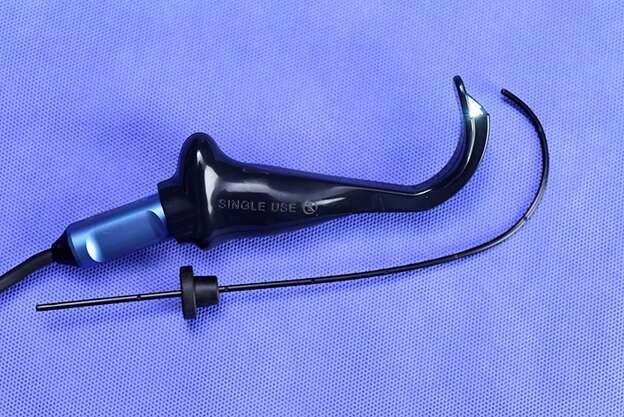
Assessment of the GlideScope® Spectrum Single-Use Video Laryngoscope Blades and Stylet for Use in Pediatrics: A Manikin Study
2Anesthesiology and Pain Management, University of Texas Southwestern Medical Center


Background: The GlideScope® Spectrum Single-Use blades offer a unique angulation for pediatric patients, a low profile, and lightweight design for improved maneuverability and working space. Furthermore, the Spectrum blades are accompanied by GlideRite® single-use stylets.
Objective: To evaluate the functionality and effectiveness of these newly-designed blades and stylet for orotracheal intubation in neonates and pediatric patients, we performed a single-site, prospective, randomized, manikin study.
Methods: Fifty participants were randomized to perform intubations beginning with either the Spectrum S1 (size 1) or S2 (size 2) blade on three different manikins (AirSim® Baby, AirSim® Child, and AirSim® Pierre Robin). The primary outcome measure was first attempt success rate. Secondary outcome measures were: overall success rate, time to intubation (TTI), glottic view and utility of the stylet.
Results: The lowest first attempt success rate was 94% with the Spectrum S1 blade in the difficult airway neonate manikin (AirSim® Pierre Robin). The first attempt success rate for all other blade/manikin combinations was 100%. The median time to intubation for both blades was comparable. A complete (CLG 1) or partial view of the glottis (CLG 2a or 2b) was obtained in all attempts. Overall satisfaction with the GlideRite ® stylet was high (84%).
Conclusion: This study demonstrates that the GlideScope® Spectrum Single-Use blades and GlideRite® stylet are appropriate and highly successful for video-guided intubation in pediatric manikin models. The unique design allows for better manipulation of the pediatric airway by providing more working room in the oropharynx, along with maneuverability of the styletted endotracheal tube.

Powered by Eventact EMS